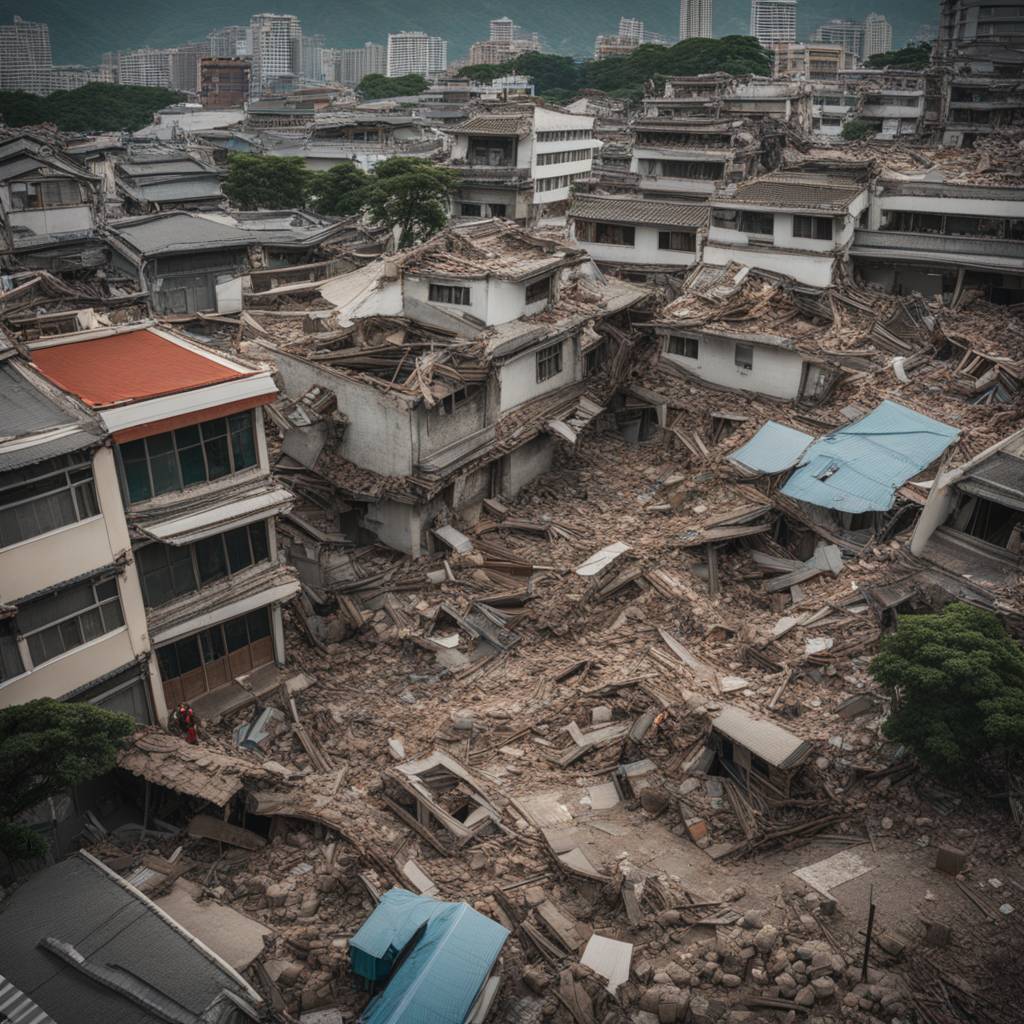A powerful earthquake with a magnitude of at least 7.4 struck Taiwan in the early hours of Wednesday morning, causing buildings in the capital city of Taipei to shake for over a minute. The quake, the strongest to hit Taiwan in 25 years, also caused dozens of buildings to collapse in Hualien County on the east coast. The death toll stood at nine, with hundreds of injuries reported and the casualty figure expected to rise as the full extent of the damage becomes clear. Tremors from the earthquake were felt in mainland China, as far away as Hangzhou, Xiamen, and Shanghai, with officials warning of potentially strong aftershocks in the days ahead.
The earthquake caused widespread devastation in Taiwan, with photos from the aftermath showing collapsed buildings, damaged roads, and rescue workers sifting through debris in search of survivors. The government mobilized emergency response teams to provide aid to those affected by the disaster, with hospitals overflowing with injured patients and volunteers working tirelessly to assist in the relief effort. The earthquake also disrupted transportation networks, with train services suspended and roads blocked by debris, making it difficult for emergency services to reach the affected areas.
In the wake of the earthquake, Taiwan’s President Tsai Ing-wen visited the disaster zone to assess the damage and offer her condolences to the victims and their families. She pledged government assistance to support the recovery efforts and ensure that those affected receive the help they need. Local authorities worked to establish shelters for displaced residents and coordinate the distribution of food and supplies to those in need. The international community also offered assistance, with neighboring countries sending search and rescue teams to aid in the rescue efforts.
As the recovery and reconstruction efforts got underway, the focus turned to ensuring the safety and well-being of those affected by the earthquake. Engineers assessed the structural integrity of buildings to determine whether they were safe to enter, while rescue teams continued to search for survivors trapped in the rubble. The earthquake also raised concerns about the region’s susceptibility to future seismic activity, prompting calls for improved building standards and disaster preparedness measures to mitigate the impact of future earthquakes.
The earthquake served as a sobering reminder of the power of nature and the importance of being prepared for natural disasters. The resilience and solidarity displayed by the people of Taiwan in the face of adversity were a testament to their strength and determination to overcome the challenges posed by the earthquake. As the recovery efforts continued, the government and humanitarian organizations worked together to provide support to those in need and rebuild communities devastated by the disaster. The earthquake will leave a lasting impact on Taiwan, but the spirit of unity and compassion shown in the aftermath of the disaster will help the country rebuild and recover from the tragedy.


